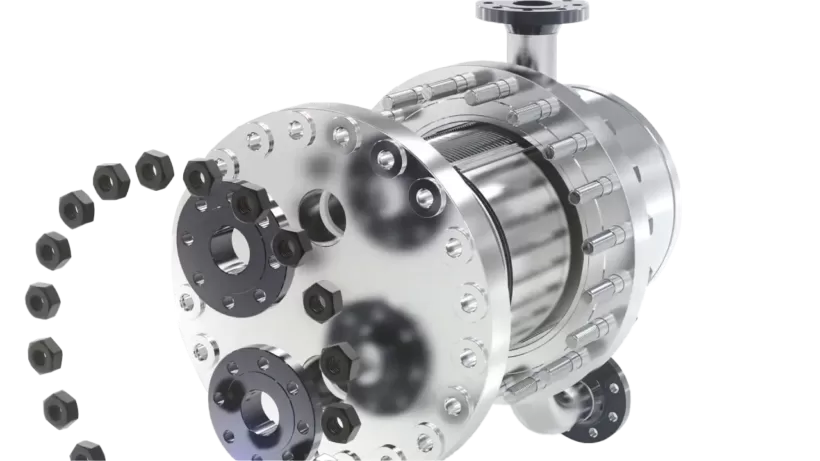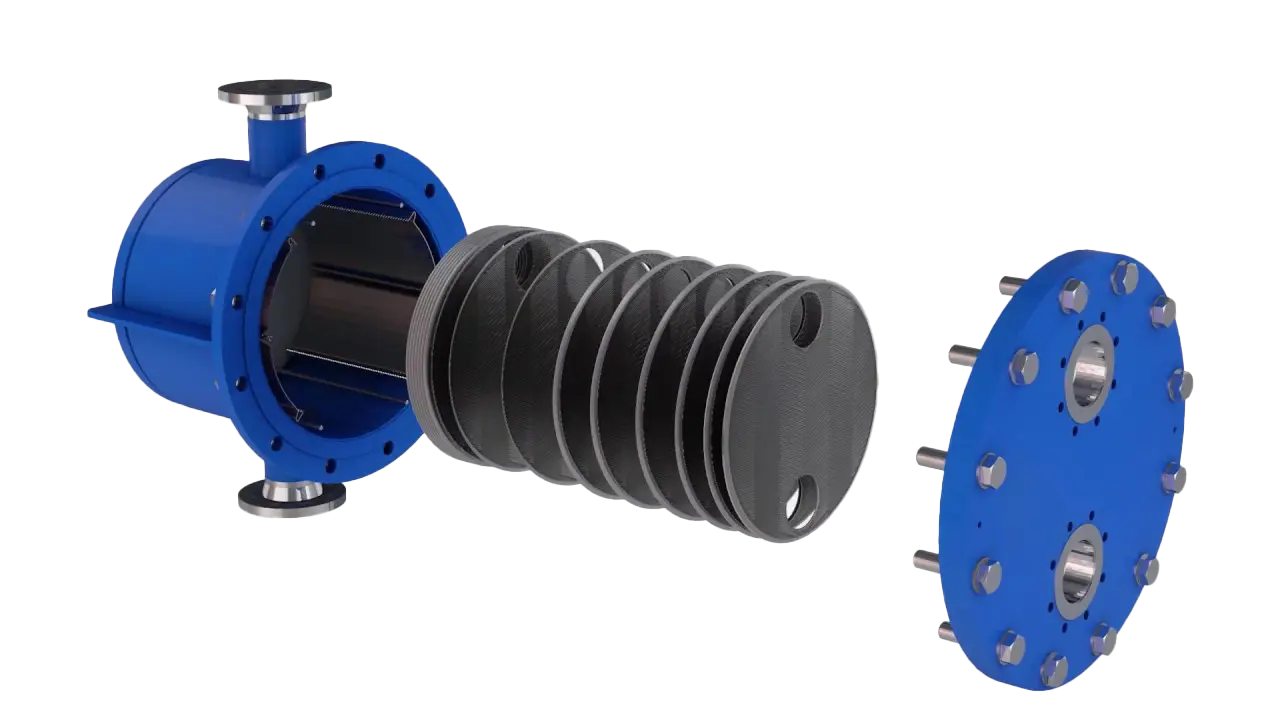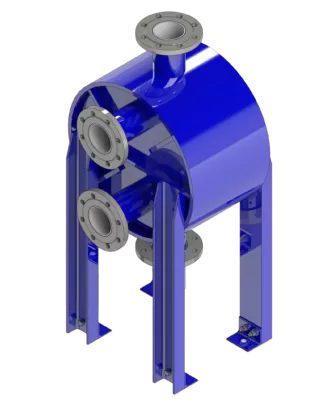- Home
- Plate Heat Exchanger
- Plate and Shell Heat Exchanger

What is a Plate and Shell Heat Exchanger and How Does It Work
What is a Plate and Shell Heat Exchanger
The plate and shell heat exchanger can be also known as the shell and plate heat exchanger or the plate shell heat exchanger. It is a modern plate type heat exchanger that utilizes a group of corrugated plates that are laser or automatically plasma welded into the shell as opposed to the conventional heat exchange tubes of the shell and tube heat exchanger.
The heat transfer element comprises two components, namely the plate group, and the shell. The plate group contains a stack of closely spaced parallel plates, similar to those found in a plate heat exchanger. These plates are typically made of stainless steel and are designed to create high turbulence and efficient heat transfer. The plate group is fabricated by laser or automatic plasma welding cold-pressed plates together to create two distinct medium flow channels.
The plate group is then surrounded by a cylindrical shell, similar to that found in a shell and tube heat exchanger. This outer shell provides additional structural support to the plates and helps to create a larger heat transfer surface area. The space between the plates is used to pass one fluid, while the shell side is used to pass the second fluid.
How does a Plate and Shell Heat Exchanger Work
The fluid designated as A passes through the plate side flow channel, while the fluid designated as B passes through the shell side flow channel. The fluids typically flow in opposite directions, which maximizes the temperature difference between the two fluids, and therefore increases the rate of heat transfer.
The flow of the fluids can be either parallel or perpendicular to the plates or shells, depending on the design of the heat exchanger. The plate and shell heat exchanger combines the benefits of plate and tube heat exchangers, making it a more prevalent choice in the heat exchange industry. The plate and shell heat exchanger exists in two categories, the detachable and fully welded models.
The design of a plate and shell heat exchanger allows for a large amount of heat transfer to take place in a compact space. The highly conductive plates allow for efficient heat transfer, while the cylindrical shell helps to distribute the flow of fluids evenly across the plates. Additionally, the design of the plate and shell heat exchanger allows for easy maintenance and cleaning, as the plates can be easily removed for inspection and cleaning.
Plate and shell heat exchanger are used in a variety of applications, including heating and cooling systems, refrigeration systems, and industrial processes. They are particularly well-suited for applications where high heat transfer rates are required in a small space, such as in the oil and gas industry or in the chemical and petrochemical industries.

Advantages of Plate and Shell Heat Exchanger
No Gasket Combined – Allowing wide range of applications, including high-pressure and high-temperature applications.
High Temperature and High-Pressure Resistance – Designed to withstand high pressures and temperatures, making them suitable for use in harsh operating environments.
High Heat Transfer Efficiency – Compact design, allowing for efficient heat transfer even in applications with limited space.
Reliable – At HFM, we strictly adhere to the highest standards of quality and safety, ensuring all of our products meet the rigorous requirements of GRG, FDA, and SGS certifications.
Basic Parameters of Plate and Shell Heat Exchanger
Stainless Steel: 304L, 316L, 904L
Special Metals: 254SMO, Hastelloy 276, Titanium, Nickel200/201
Plate Thickness: 0.8mm-1.2mm
Design Pressure: Max 64bar
Design Temperature: -196~ 400℃


Recommended Applications of Plate and Shell Heat Exchanger
Petrochemical
Oil & Gas
Energy Power
Metallurgy
HVAC
Biomedicine
Marine
Food & Beverage

